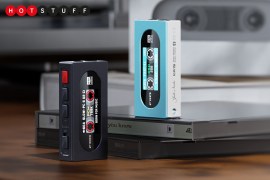FiiO M23 review: one potent portable player
Put that smartphone down – a DAP this divine will get your portable audio properly sorted.
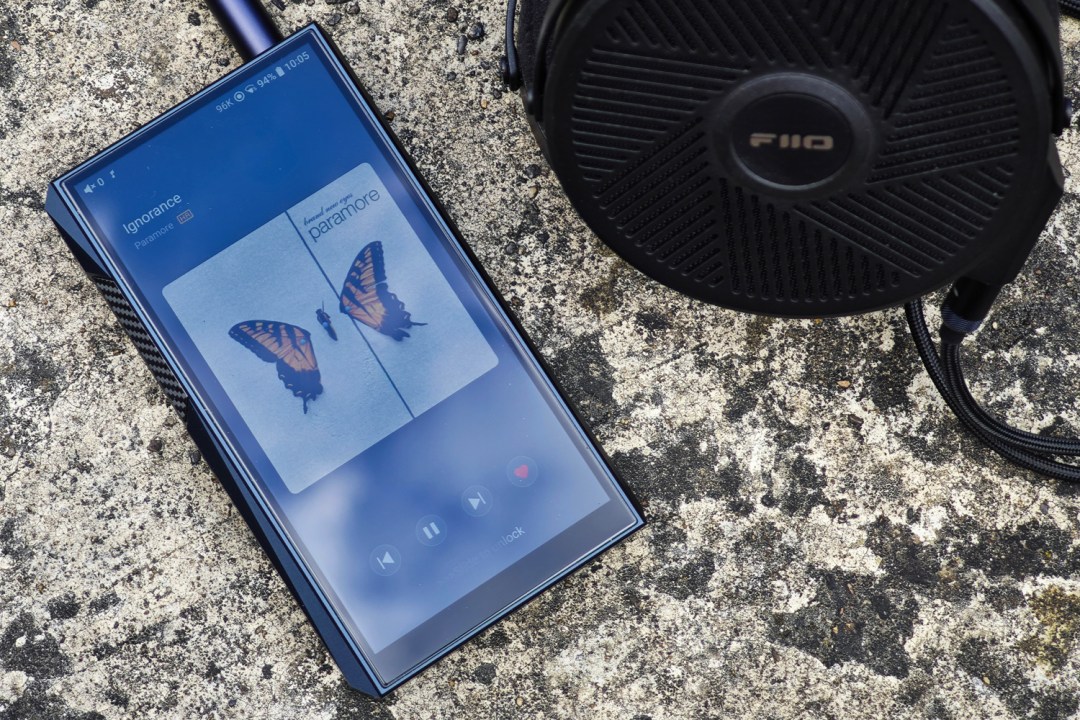
Stuff Verdict
You don’t have to be a sound quality snob to appreciate the FiiO M23’s extensive repertoire. There’s enough here to please every mobile music fan.
Pros
- Superb sound from all sources
- Slick looks and clear screen
- Can pull double duty as a desktop DAC
Cons
- Battery life isn’t exceptional
- Hardly a featherweight
Introduction
Smartphones might’ve put the iPod out to pasture, but demand for dedicated players never went away in high-end audio land. FiiO’s latest is the M23, an evolution of the already excellent FiiO M11S. It’s packing new DAC chipsets from AKM that bring even more nuanced sound, along with increased power to run the most demanding headphones.
It feels wrong to call a $700/£650 music player mainstream, but competition is now largely limited to Astell&Kern‘s pricey players, along with a few Sony models still flying the flag for the Walkman brand. That puts the M23 into an audiophile sweet spot – not an all-out flagship DAP, but still fully-featured, and at a price that won’t set off fraud warnings at your credit card company.
After a few weeks of listening, both at home and on the move, I’m starting to wonder if I’ll ever listen to music through my phone again.
How we test audio equipment
Every speaker, amp and Hi-Fi separate reviewed on Stuff is used for a minimum of a week’s worth of daily listening. We use a playlist of test tracks made up of multiple genres to assess sound, and use our years of experience to compare to other models. Manufacturers have no visibility on reviews before they appear online, and we never accept payment to feature products.
Find out more about how we test and rate products.
Design & build: carbon copy
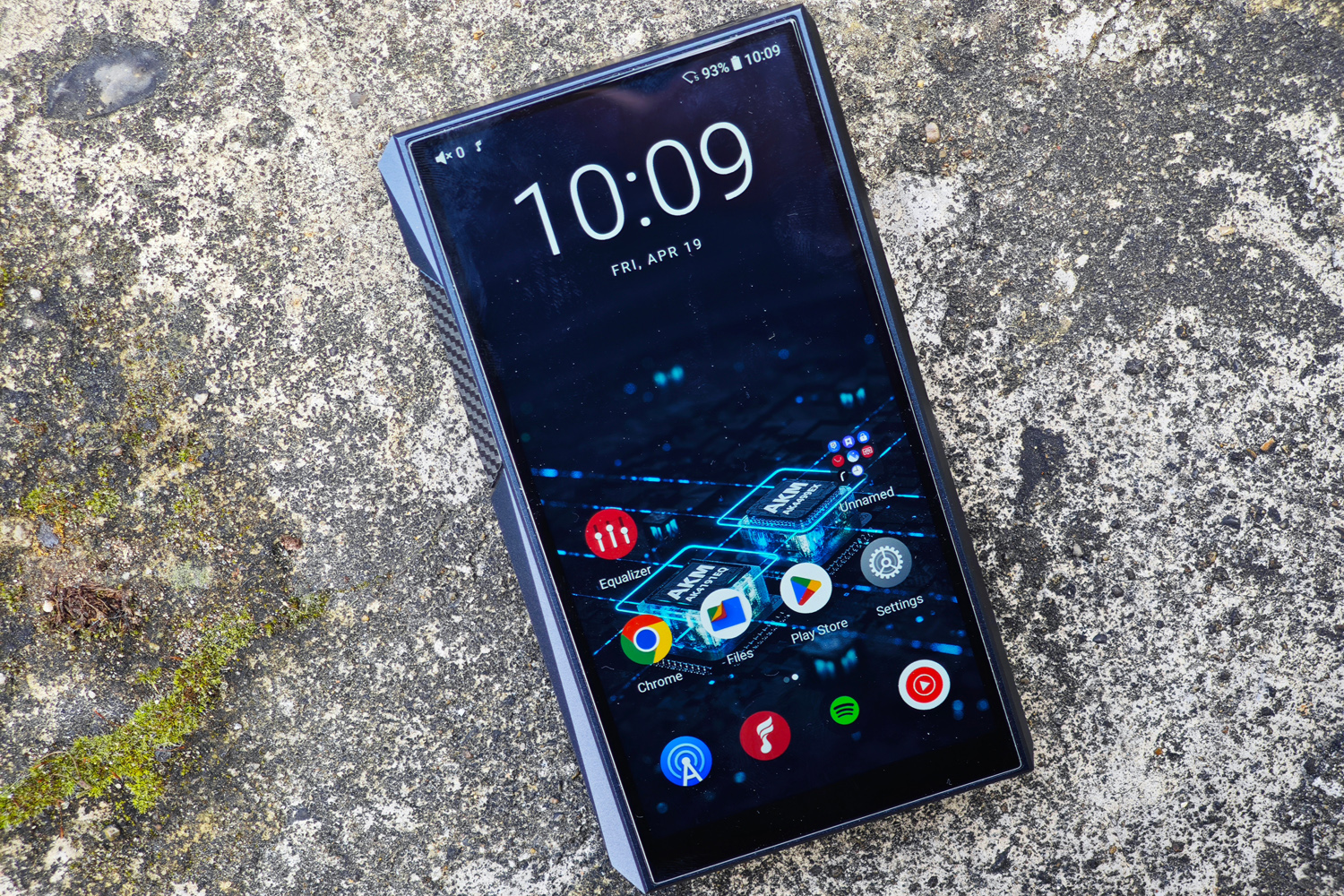
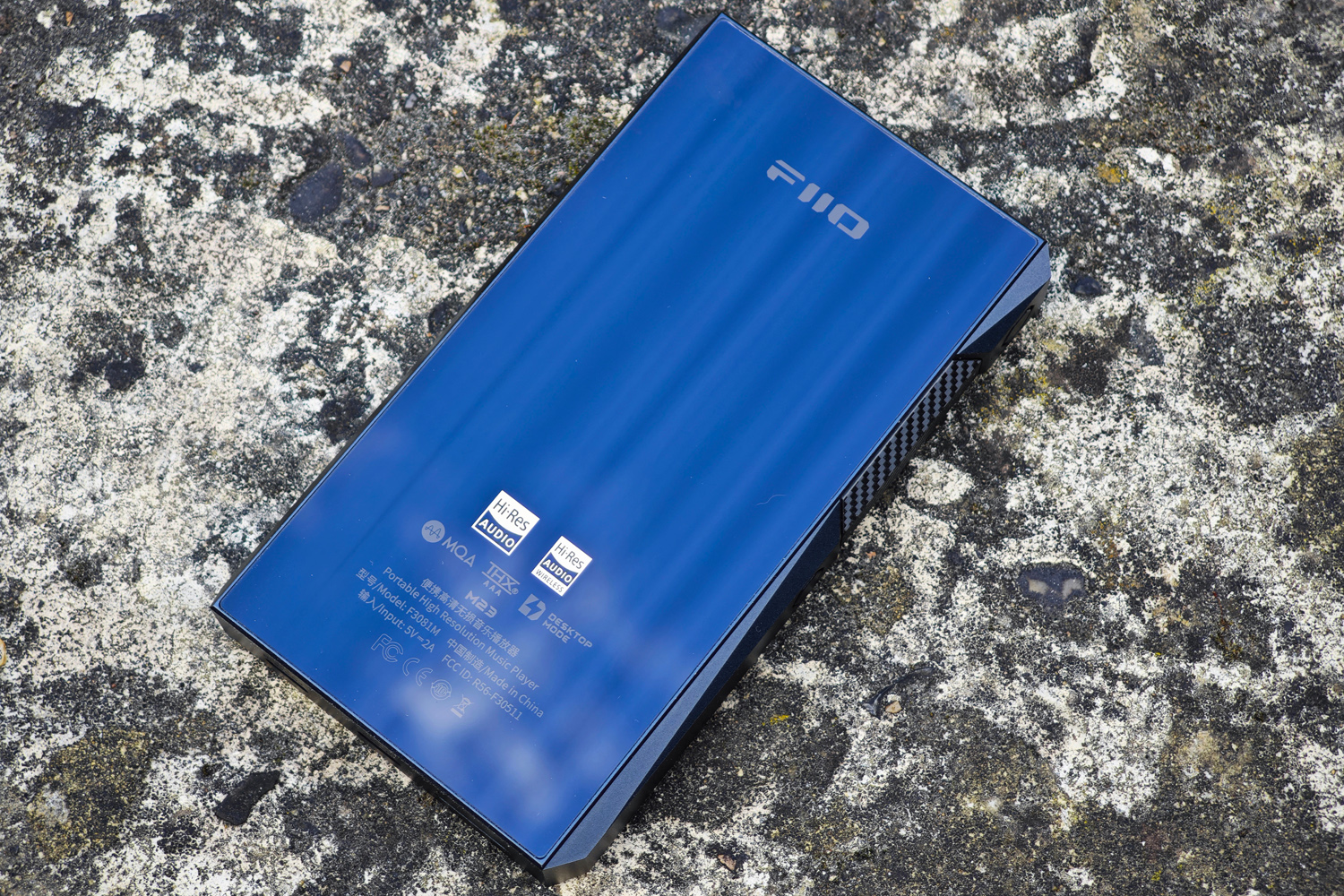
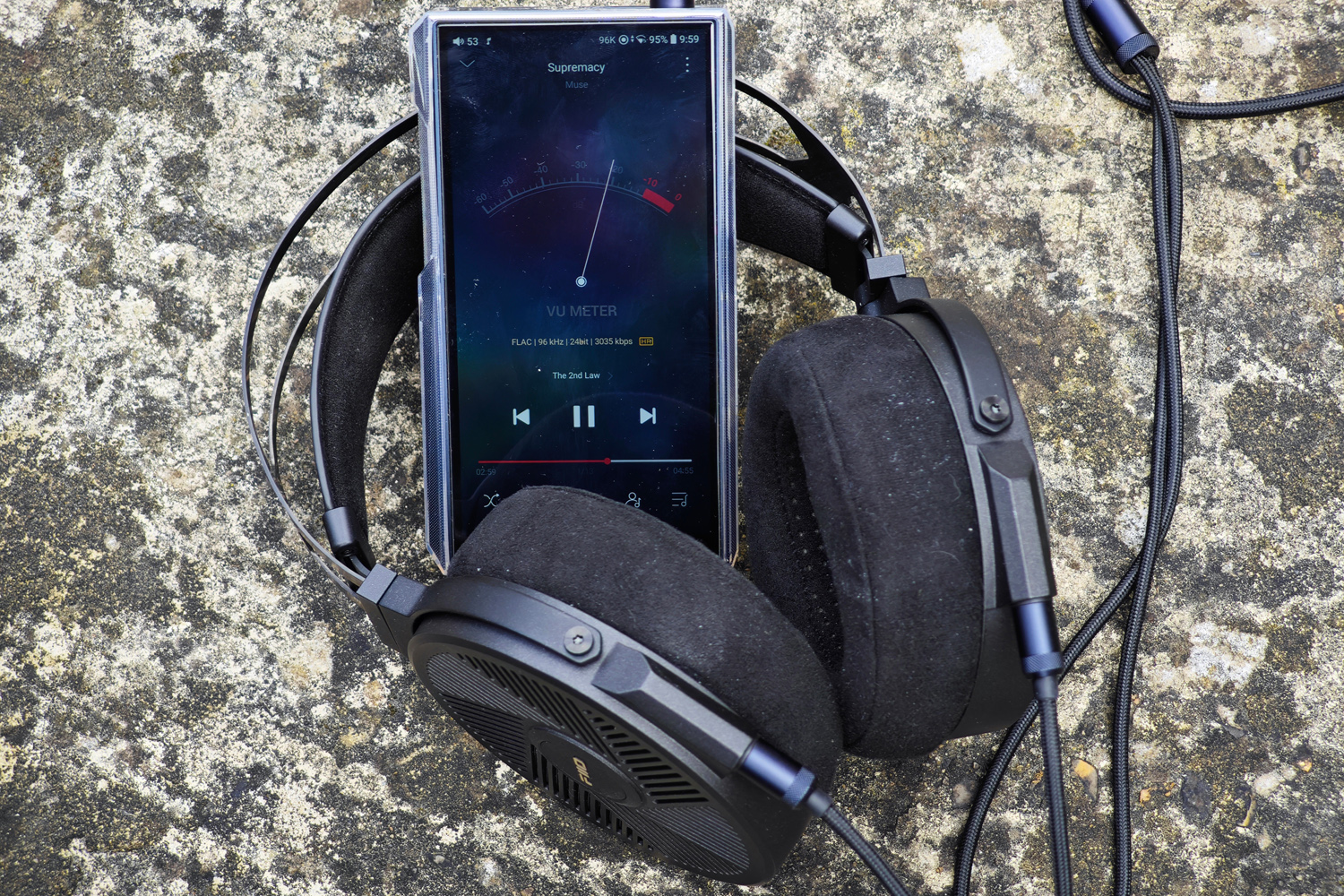
With an angular body milled out of metal, FiiO’s familiar honeycomb-inspired buttons and carbon fibre effect volume slider, the M23 looks an awful lot like the outgoing M11. There are a few differences, which all improve usability.
The 3.5mm and balanced 4.4mm inputs are now on the top edge, rather than the bottom, meaning I didn’t have to reverse the controls in my head when changing tracks with the player in my pocket. The 2.5mm headphone port has been deleted (not a big deal in my view, as it’s rarely used anymore), and there are now two USB-C ports on the bottom edge, along with a relocated microSD card slot. More on those two later.
There’s still a sizeable 5.5in LCD display up front, this time with a sharper 1440×720 resolution panel that gets decently bright and is colourful enough to do justice to your music library’s album art.
This chunky unit is as hefty as you’d expect, being about twice as thick as your phone, but still able to squeeze into a pocket. It means there’s plenty of room at the sides for the physical controls, the volume sider (which is perhaps a bit too touch-sensitive, though you can change its behaviour in the settings menus), and a useful hold switch that prevents accidental pauses or track skips.
I’ve only seen photos of the stainless steel model, which looks undeniably sleek, but comes with a weight penalty. It’s a substantial 392g, which is almost 100g more than the blue titanium model I tested. I like how the rear panel looks black at certain angles but blue at others, but the glossy finish is an undeniable fingerprint magnet. It’ll only be an issue if you take the M23 out of its pre-fitted plastic protective case, which feels as cheap as most pack-ins tend to. I can’t complain about the preinstalled screen protector, though.
Features & battery: suits all tastes
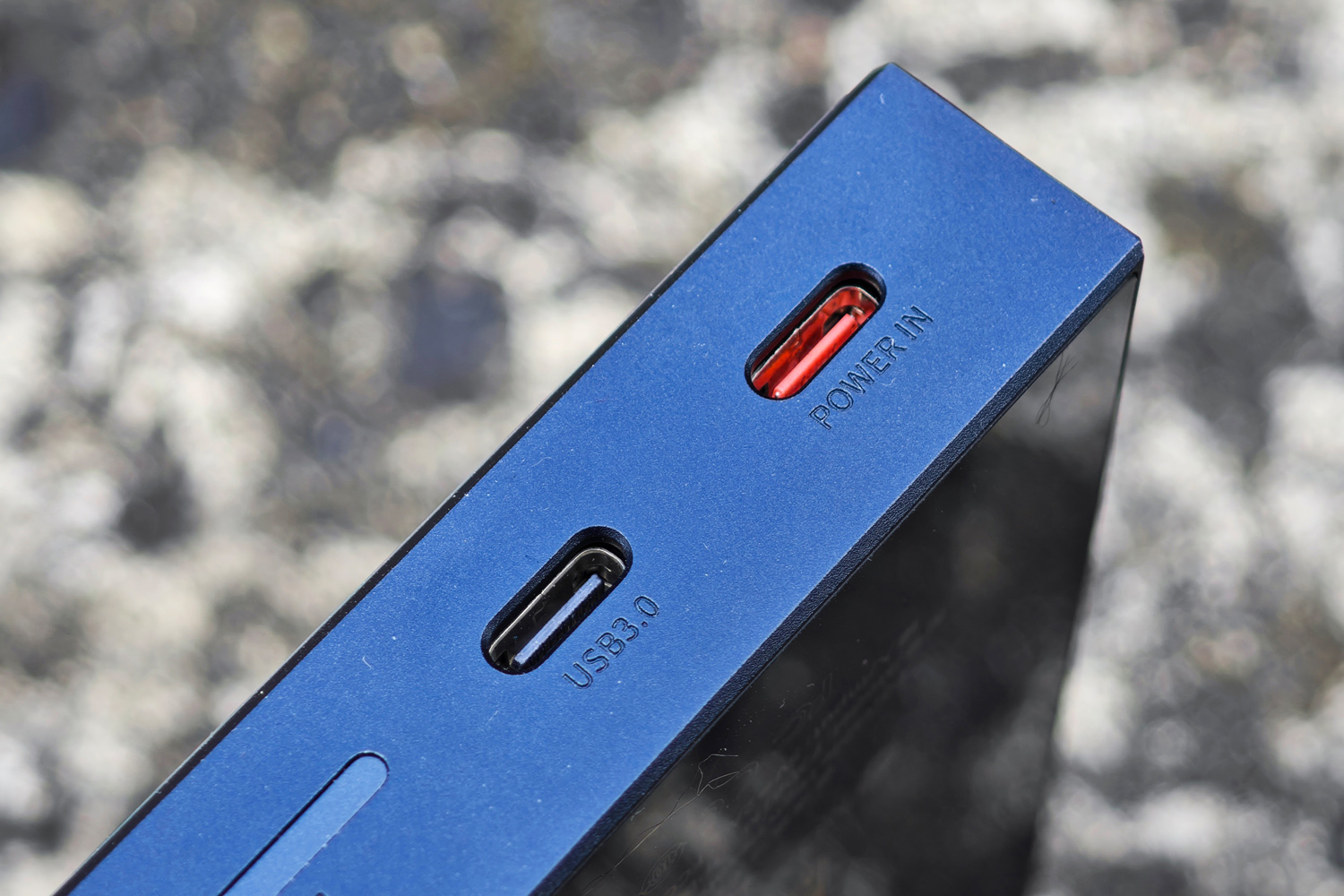
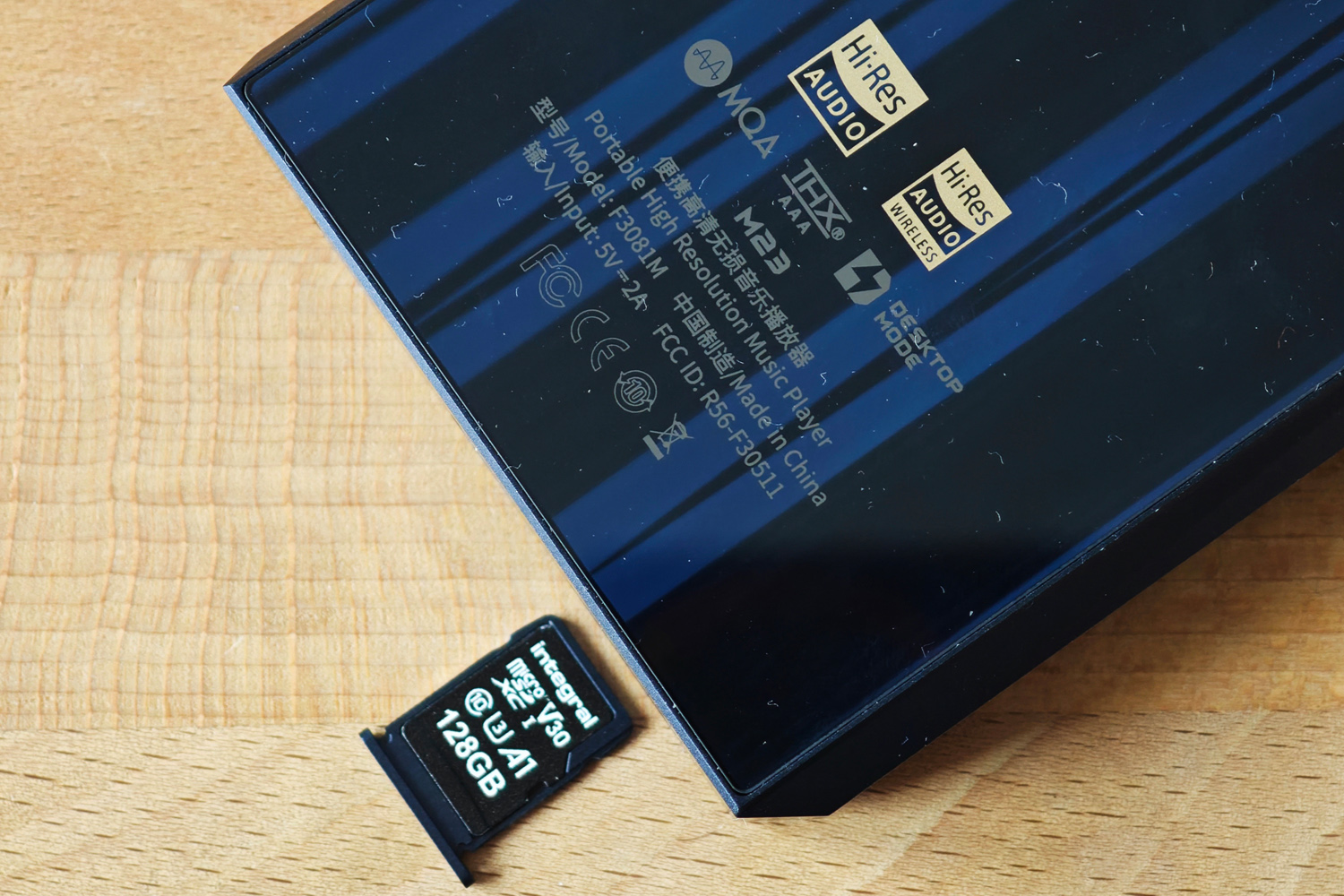
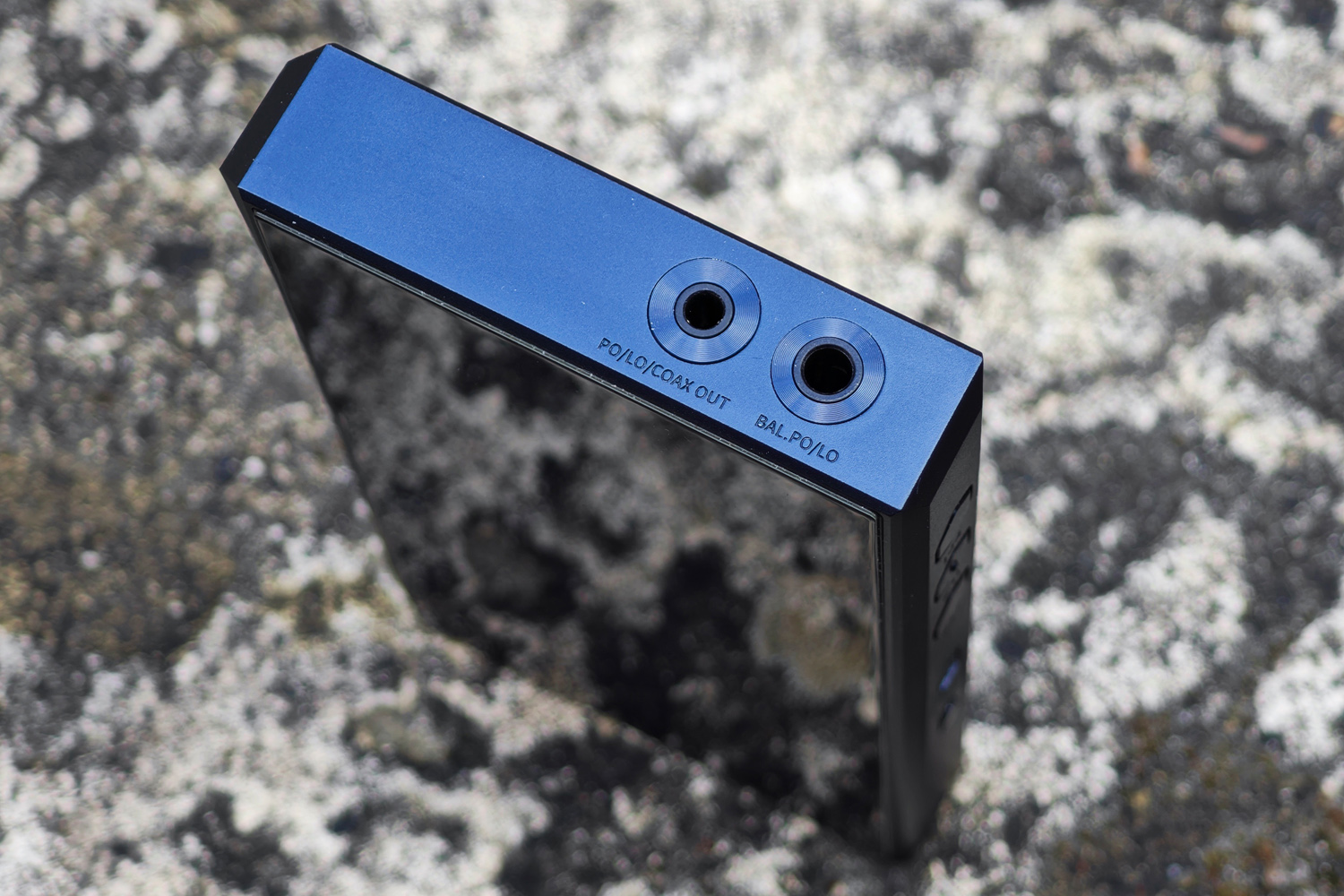
LDAC, LHDC and aptX HD Bluetooth will please wireless fans, but this player is more about wired listening. A THX AAA-78+ amplifier gives the 3.5mm output enough oomph to power any pair of IEMs, while also managing an imperceptible noise floor with particularly sensitive headphones.
Its two USB-C ports aren’t for charging at double speed; one handles data transfers while the other is purely for power. With an external supply, the M23 becomes a desktop DAC, complete with ‘super-high’ gain mode that outputs a whopping 1000mW output. Per channel. That’s enough to drive seriously demanding over-ear cans through the balanced 4.4mm port, while bypassing the battery to keep it in peak condition.
That’s handy, as battery life isn’t outstanding – it rarely is on portable music players once DSDs and high-resolution FLACs come into play. I saw just north of ten hours when listening via the 3.55mm port, and under nine with a pair of balanced headphones. Expect less if you’re using the touchscreen a lot – or doing things other than playing music. Charging is a reasonably speedy 30W over USB-C, at least.
Audio processing is handled by AKM’s AK4191EQ and AK4499EX DAC combo, which split the digital and analogue processing across two chips. That helps create a lower signal-to-noise ratio than outgoing M11 Plus, which used ESS Sabre chips. Naturally they can play any audio file you care to mention, including 24-bit/384kHz PCM, DSD256 and MQA encoded streams.
Interface: Droid and tested
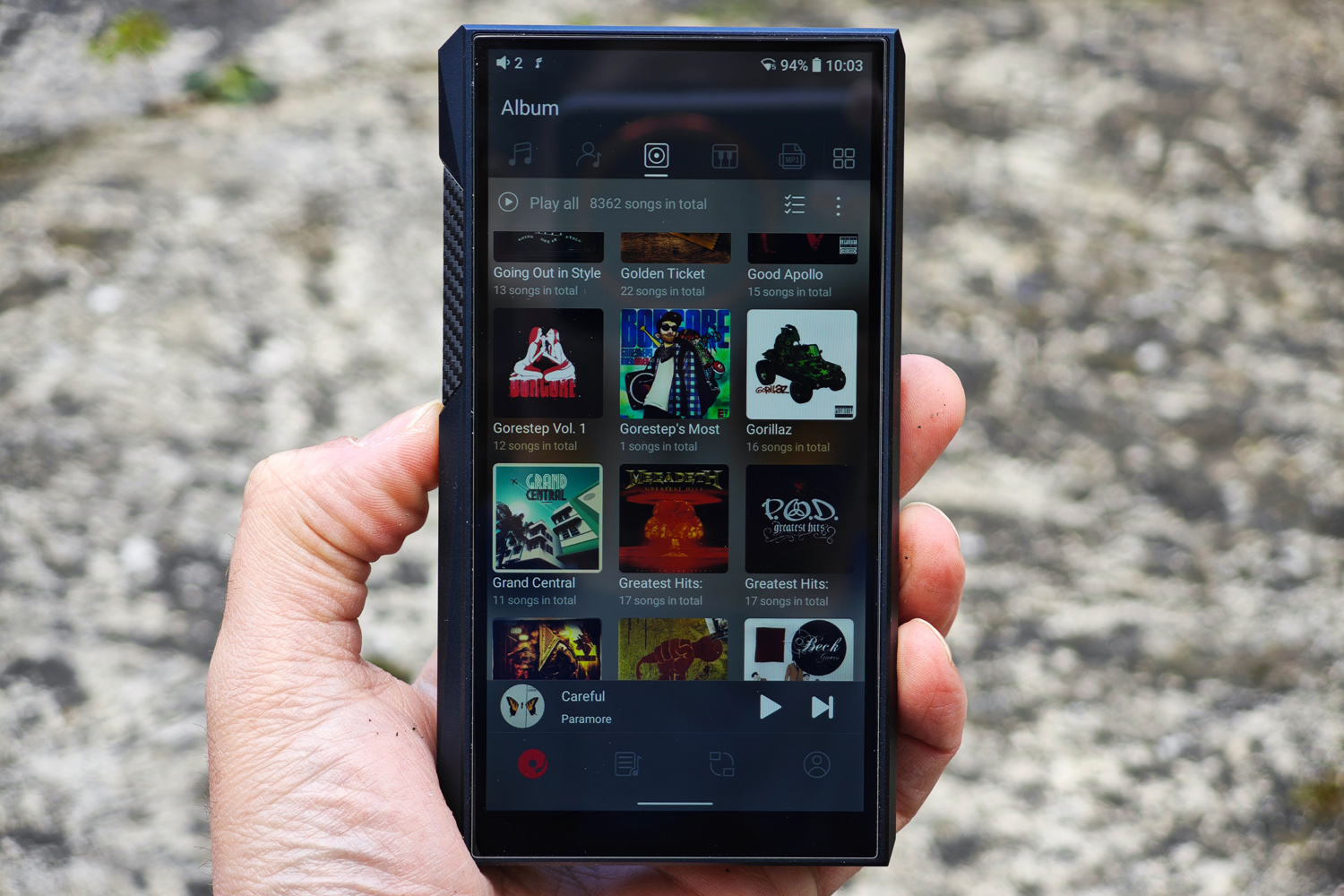
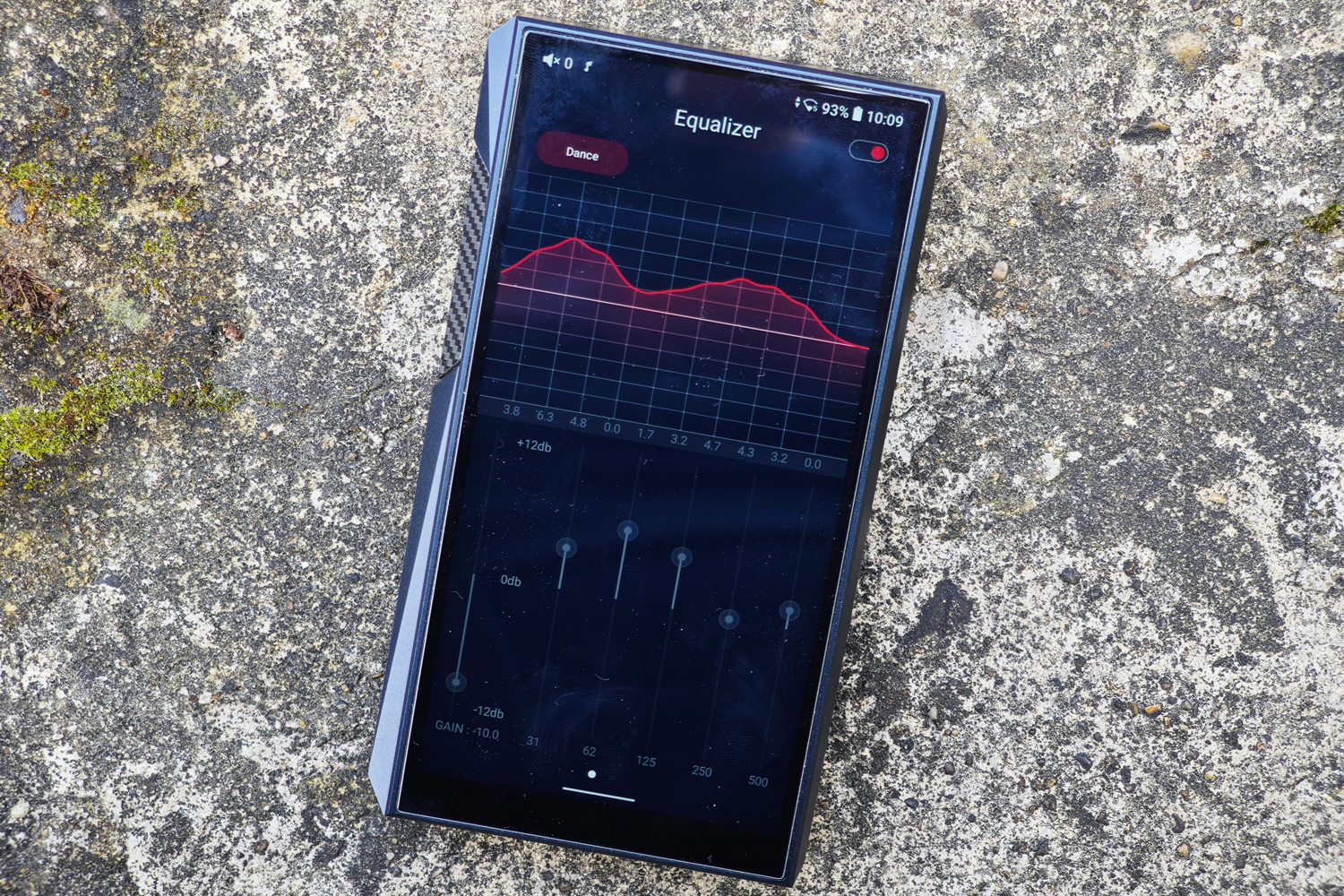
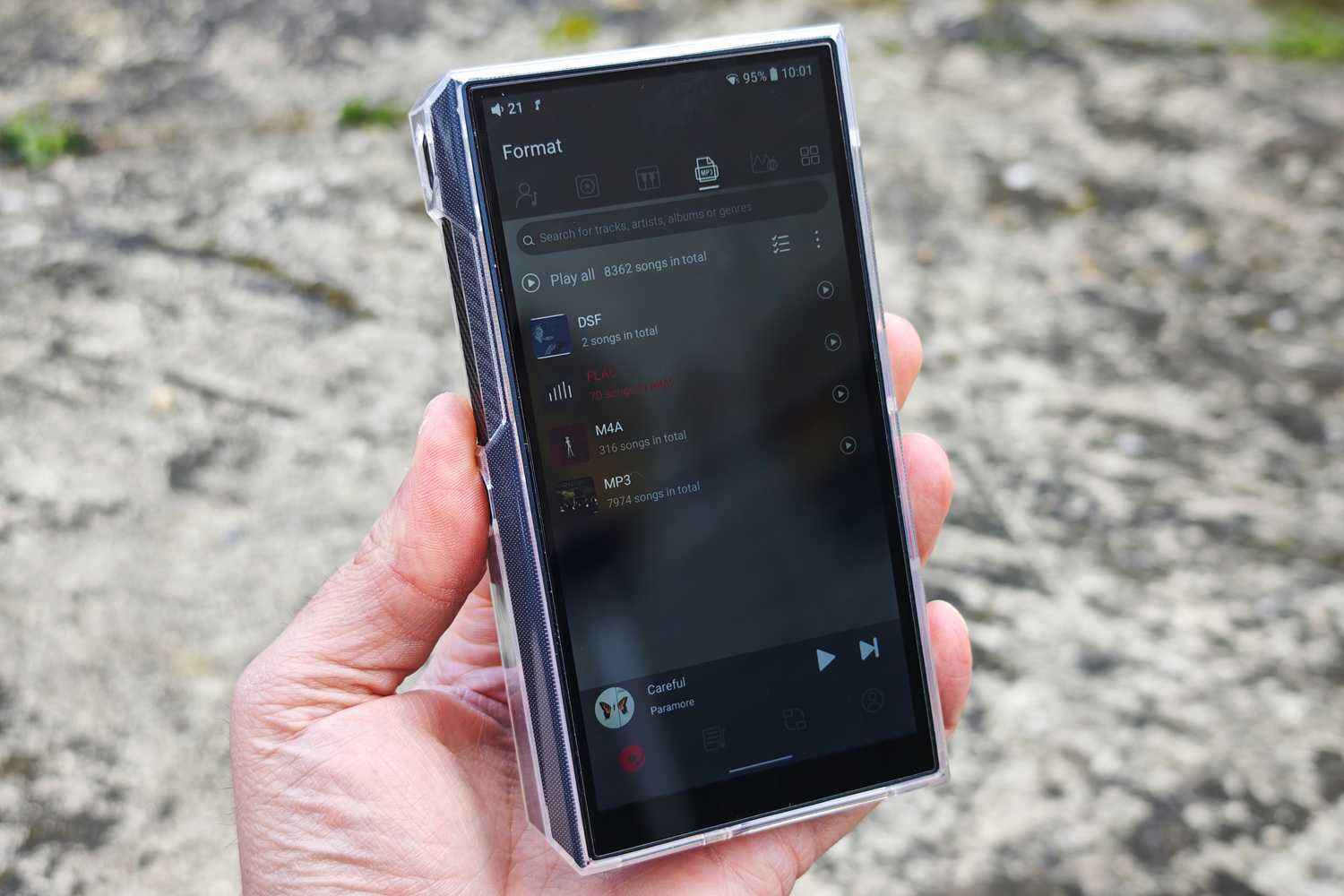
The FiiO M23’s internals are tried-and-tested, having shown up in several of the firm’s older portable players. That includes the Snapdragon 660 chipset, which is paired with 4GB of RAM; a modest amount by smartphone standards, but a welcome boost over the M11’s 3GB. There’s enough grunt to run Android smoothly, whether you stick to FiiO’s own jukebox app for local playback or download streaming apps like Tidal or Qobuz from the Play Store.
Android 10 is a bit behind the times, given Google is already testing version 15, but FiiO has promised an upgrade to Android 12 is on the horizon. As it stands, the UI is clean and pre-installed apps are kept to a bare minimum. Not even YouTube makes the cut, making it clear this is a music-first device – though you can easily install it with a few taps if you want a more multi-purpose player. At the opposite end of that spectrum, a Pure Music mode bypasses the Android interface entirely in order to minimise any possible audio interference.
64GB of internal storage is twice what you got from the outgoing M11, but still fills up pretty quickly if your music library is mainly high-resolution audio files. I was grateful for the microSD slot, which can swallow up to 2TB cards, although it needs a pin or smartphone SIM tray tool to access it. If you’re still using multiple smaller cards for your music, it’s probably time to trade up to a single larger one.
Sound quality: impartial observer
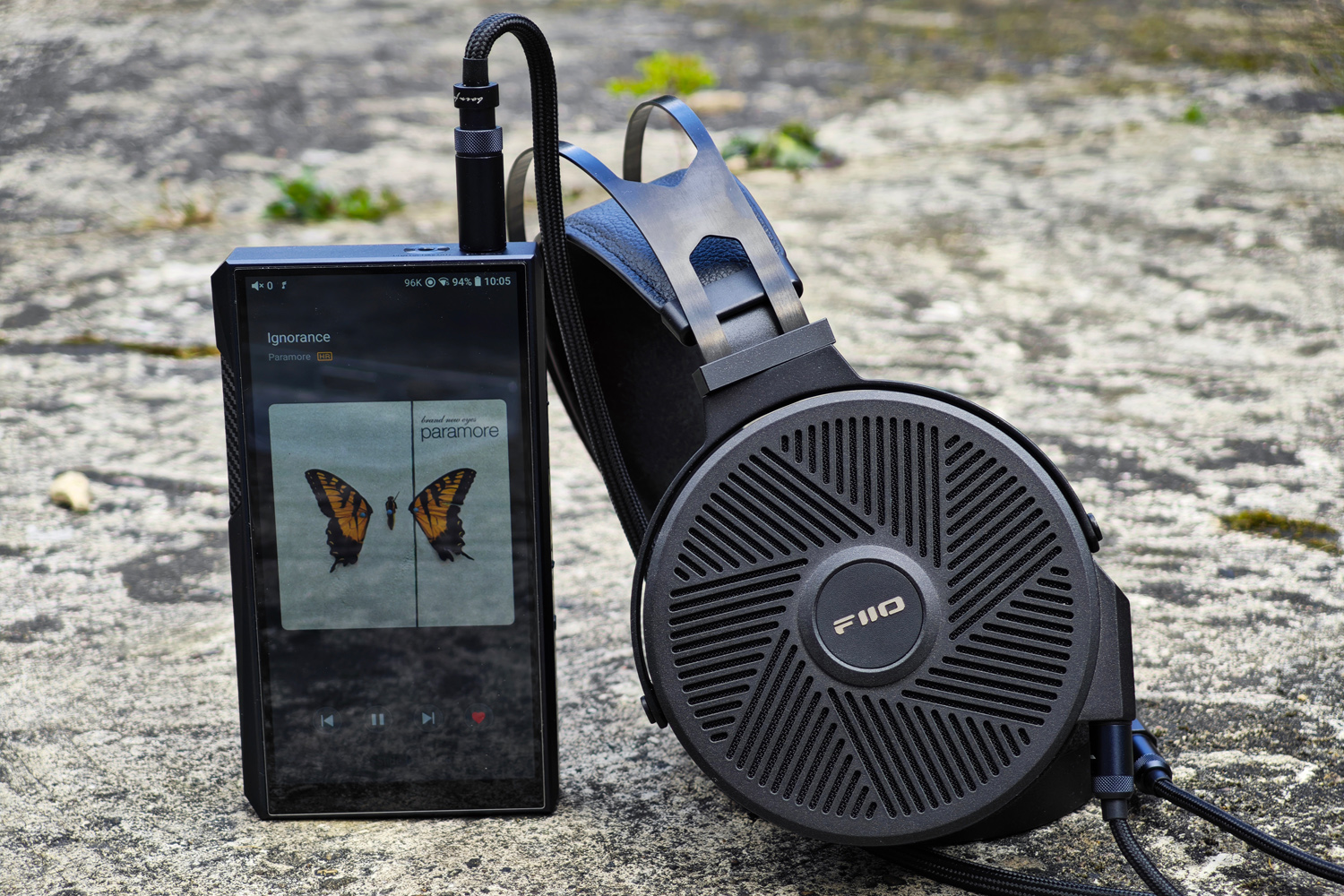
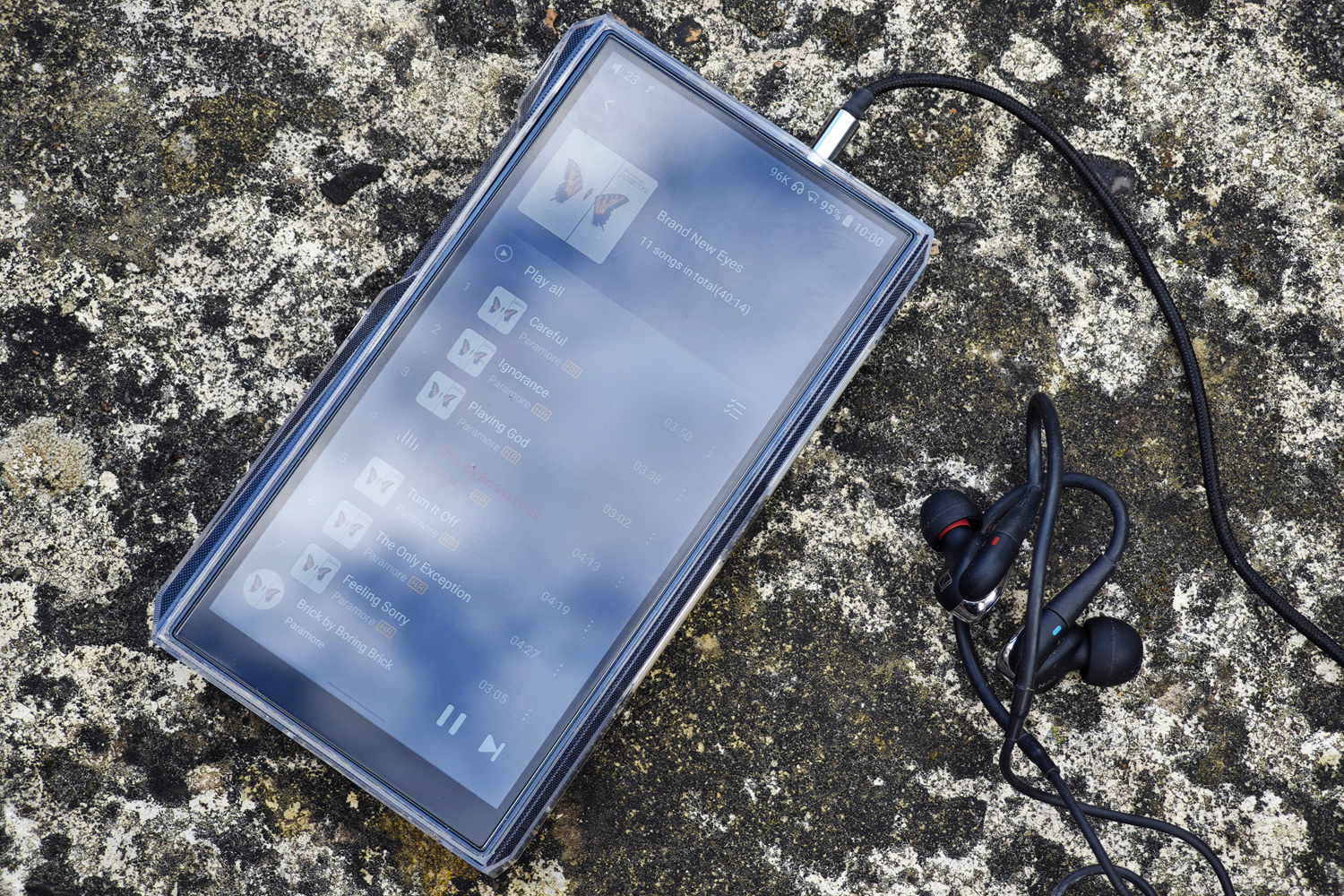
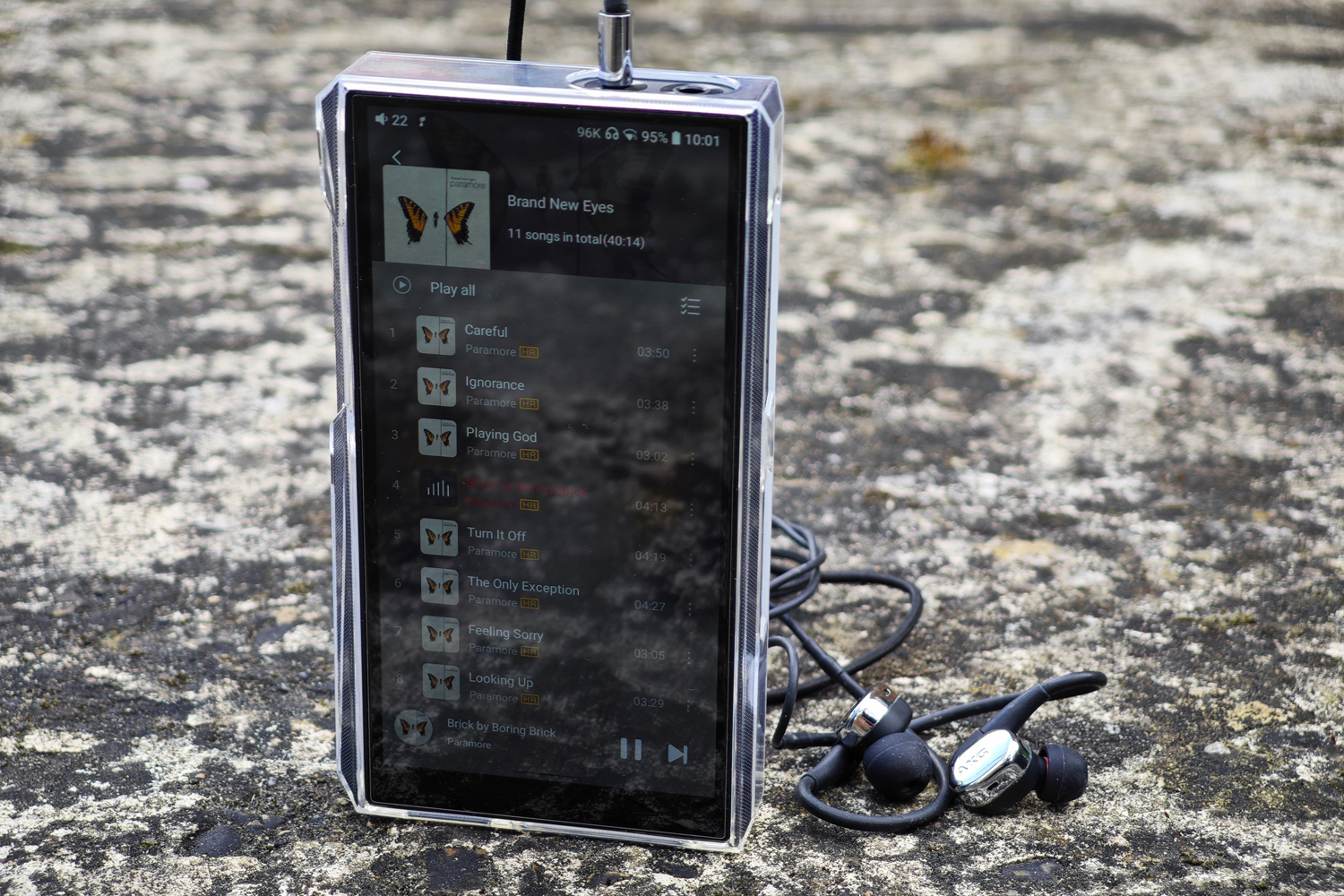
The best thing about the FiiO M23’s audio processing is that it happens entirely in the background. Sound is wonderfully balanced, with no extra colour than what was present on the original recording. This neutral presentation doesn’t give preferential treatment to either bass or treble, meaning a muddy low-end or bright highs are the fault of the track’s mixing engineer.
Detail and frequency separation are both superb, and only really bettered by players costing multiple times the M23’s asking price – but even then not by multiple magnitudes. The flow between different parts of the frequency range is delicate, giving a 24-bit FLAC version of Muse’s Madness incredible airiness. The M17 is still FiiO’s flagship DAP for a reason, but the M23 barely puts a foot wrong on this front.
That carries over to lower quality MP3s and streaming services, with superb rhythmic expression no matter what genres I threw at it.
Unless you spent multiple thousands of pounds on your headphones, there’ll be more than enough volume on tap, with no sibilance or harshness introduced by the player as you crank it up. Straightforward gain controls and 120 volume steps allow for teensy adjustments, which is appreciated.
FiiO M23 verdict
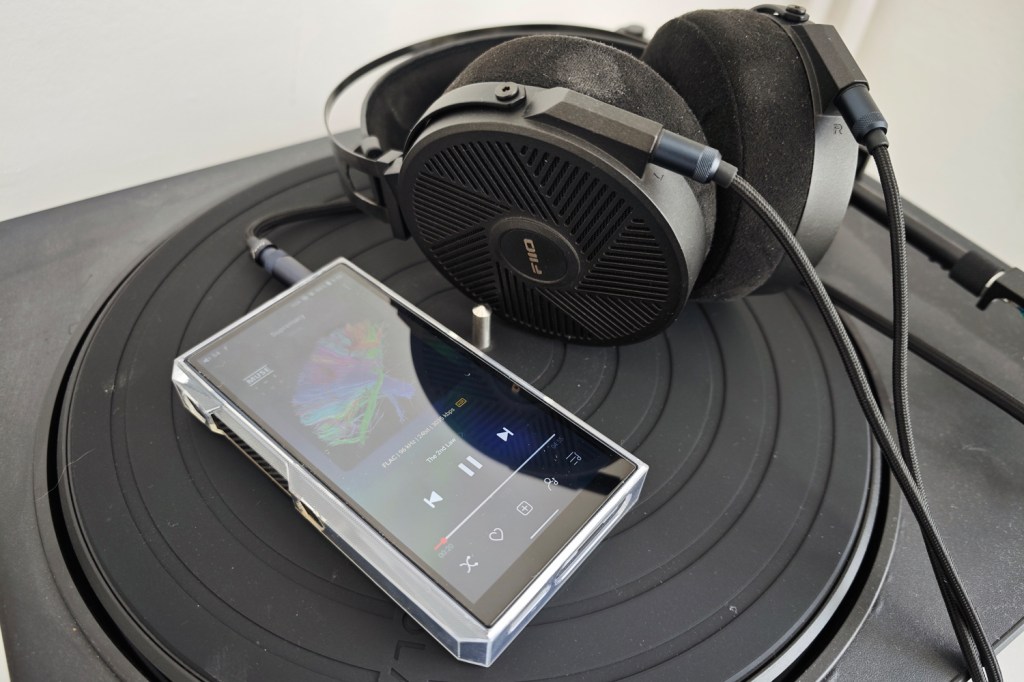
It’s by no means a bargain, and will probably go over the heads of anyone happy with their smartphone, some basic wireless earbuds, and a Spotify subscription. But the FiiO M23 is far more accomplished than that, no matter what music you put through it.
Wired or wireless; in-ear or over-ear; sat at home or on the move; this player can do it all, with absolutely stellar sound quality and expansive streaming support.
Stuff Says…
You don’t have to be a sound quality snob to appreciate the M23’s extensive repertoire. There’s enough here to please every mobile music fan.
Pros
Superb sound from all sources
Slick looks and clear screen
Can pull double duty as a desktop DAC
Cons
Battery life isn’t exceptional
Hardly a featherweight
FiiO M23 technical specifications
| DAC | Asahi Kasei AK4191EQ+AK4499EX |
| Outputs | 4.4mm balanced, 3.5mm unbalanced |
| Screen | 5.5in, 1440×900 LCD |
| CPU | Qualcomm Snapdragon 660 |
| Memory | 4GB RAM |
| Storage | 64GB onboard, microSD expansion |
| Battery | 5500mAh |
| Operating system | Android 10 |
| Dimensions | 137x76x18.1mm, 299g |



